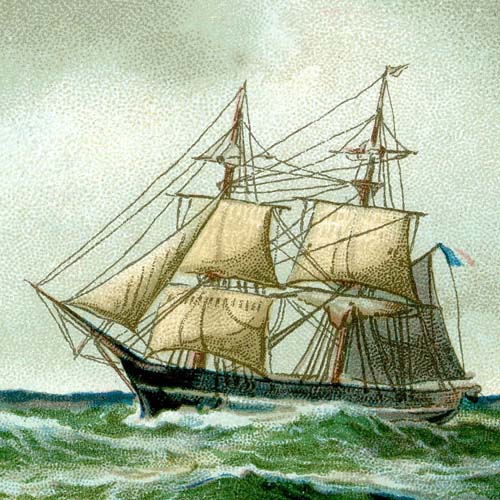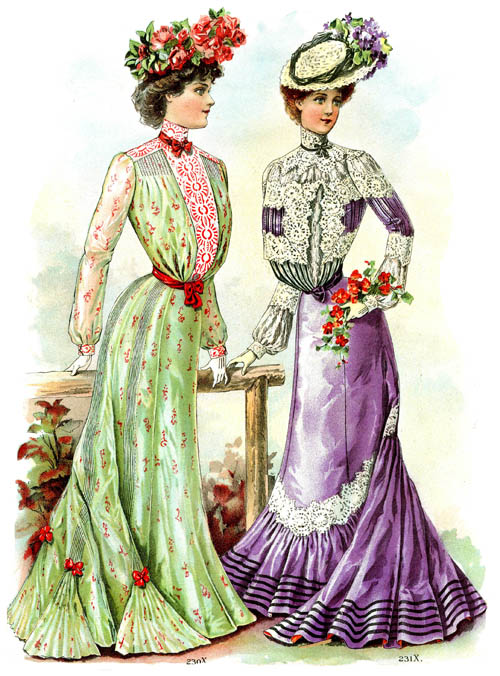 "Getting around" in Victorian days wasn't quite as easy as it was today. When one thinks of Victorian transportation, one might logically think, first and foremost, of horses. Yet by the late Victorian period - the 1880's and 1890's - horses were not necessarily the primary method of travel for most Victorians. In fact, magazines of this period rarely talk about horses or riding at all - and when they do, it is more often in the context of recreation.
"Getting around" in Victorian days wasn't quite as easy as it was today. When one thinks of Victorian transportation, one might logically think, first and foremost, of horses. Yet by the late Victorian period - the 1880's and 1890's - horses were not necessarily the primary method of travel for most Victorians. In fact, magazines of this period rarely talk about horses or riding at all - and when they do, it is more often in the context of recreation.
During the Victorian era, transportation shifted from the horse-drawn coach to a gridwork of rails that, in Britain at least, could carry a passenger from one end of the country to anther in a seemingly miraculously short period of time. (In America, things often took a bit longer.) This, in turn, brought about the need for improved railways, bridges and tunnels. On the seas, the era saw the transition from wooden ships to steamships, which required changes in shipping routes (steamships could travel in a more or less straight line rather than being subject to the prevailing winds) and navigation laws. And "carriages without horses" were just around the corner.
That doesn't mean horses weren't used. Cabs, trams, and carriages of every description were essential to Victorian transport. But horses were becoming increasingly the transportation method for short distances. In towns and cities, it was difficult and expensive to own your own horses or maintain a carriage, so if you needed to get somewhere, you probably hired a vehicle. In London, you might take a cab or a streetcar.
Trains were the great equalizer of transportation. For the first time, almost anyone could afford to travel a considerable distance away from home - which revolutionized the Victorian vacation industry as thousands of working-class folks headed toward the spas and beaches for their holidays. Another great equalizer (and a major contributor to women's emancipation) was the bicycle, which was very nearly as useful as a horse, and a lot less expensive to maintain.
This section looks at the ever-changing Victorian methods of travel, and the changes and improvements to roads and infrastructures that these methods brought about.
- Victorian Transportation Systems
- Horses and Horse-Drawn Vehicles
- Trains & Locomotives
- Railroads & Railways
- Railway Bridges & Tunnels
- Roads, Road-Building and the Automobile
- Travel in the Air: Balloons, Zeppelins & Planes
- Boats & Sailing Vessels
- Steamships
- Navigation Issues, Lighthouses & Shipwrecks
- See also the Recreation section for articles on riding, cycling, and various methods of travel.
|
Visit Our Victorian Shop
for:
Books
Coloring Books
Beautiful Spiral Journals
Holiday Greeting Cards
|
|


 Discover thousands of Victorian images in our
Discover thousands of Victorian images in our  "Getting around" in Victorian days wasn't quite as easy as it was today. When one thinks of Victorian transportation, one might logically think, first and foremost, of horses. Yet by the late Victorian period - the 1880's and 1890's - horses were not necessarily the primary method of travel for most Victorians. In fact, magazines of this period rarely talk about horses or riding at all - and when they do, it is more often in the context of recreation.
"Getting around" in Victorian days wasn't quite as easy as it was today. When one thinks of Victorian transportation, one might logically think, first and foremost, of horses. Yet by the late Victorian period - the 1880's and 1890's - horses were not necessarily the primary method of travel for most Victorians. In fact, magazines of this period rarely talk about horses or riding at all - and when they do, it is more often in the context of recreation.